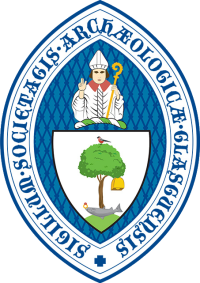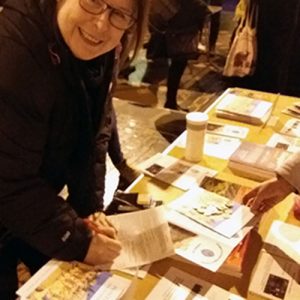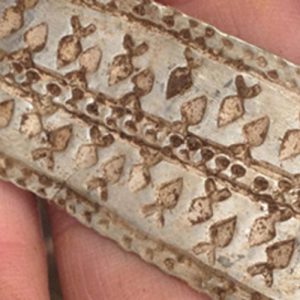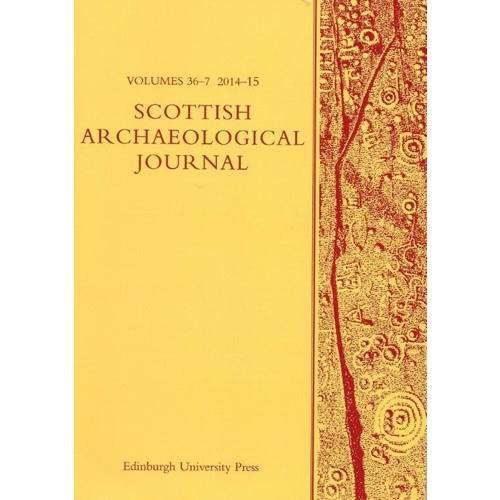About the Journal
The Scottish Archaeological Journal is published to further the study of Scotland and northern Britain, by publishing papers, notes and reviews dealing primarily with the archaeological evidence. The Journal can accommodate papers reporting on fieldwork, discussions of collections housed in northern museums and synthetic discussions on any topic that is relevant to the understanding of Scottish archaeology and history. While maintaining a special responsibility for western Scotland, the journal aims to serve as a medium for co-ordinating the work of archaeologists with that of historians and scholars in scientific disciplines throughout northern Britain.
The journal is published bi-annually in March and October, and material can be submitted at any time. All articles submitted for publication will be refereed by the editorial board or by experts in the appropriate fields. Prospective contributors are invited to contact the Editor, Jim Mearns via this email address.
A list of the contents of past journals is available upon request.
General Points on the Journal’s Style
An important aim of the Journal is to ensure that the papers are comprehensible both to professionals in other branches of the subject and to the non-specialist readers who form the majority of the Society’s membership. Clarity of expression can be achieved without sacrificing detail or precision. Technical terms need not be omitted, but obscure jargon must be avoided.
The Editor, in consultation with the referees, will advise on matters of content and expression and will use the house style to ensure that the subject matter is clearly organised. Authors of technical reports are asked to avoid sentences cluttered with obscure numbered or lettered references in brackets, particularly when referring to the strata or contexts of an excavation. It is preferable to refer directly to the feature in the text, eg, ‘pit XYZ lay to the S of the entrance.’ Acronyms which may be obscure to the general reader, eg, HS and RCAHMS, should be written out in full.
Organisation of Texts
Submissions should include the following elements:
- Title
- Author name
- Summary
- Main text
- Acknowledgements
- Bibliographical references
- Appendices
- List of Illustrations
Author’s name: This should include the names of all contributors with degrees and affiliations and contact addresses.
Summary: Not normally longer than 150 words; it should set out the main conclusions and mention any important evidence reported upon.
Main text: Longer reports will normally be subdivided. Four levels of sub-headings are available, if in doubt consult with editor for specific guidance.
Acknowledgements: If required these should be included immediately after the main text.
Notes: These should be avoided unless absolutely essential. Notes are printed immediately before the list of references.
References: The Harvard system of references is used, i.e. sources are cited within brackets in the main text – e.g. (Boyd 1984b, 33) or (Jessen and Helbaek 1944, fig. 2) – and a complete list of the sources cited is included at the end of the paper. References are arranged in alphabetical order and volume numbers of journals should be double underlined so that they will appear in bold print, e.g. –
BIBLIOGRAPHY
BIRKS, H J B 1977 The Flandrian forest history of Scotland: a preliminary history, in Shotton, F W (ed.), British Quaternary Studies: recent advances, Oxford, 119-35.
BOYD, W E 1984a Environmental change and Iron Age land management in the area of the Antonine Wall, Central Scotand: a summary. Glasgow Archaeol J 11, 75-81.
BOYD, W E 1984b Prehistoric hedges: Roman Iron Age hedges from Bar Hill. Scottish Archaeol Rev 3, 32-34.
BUCHANAN, M 1905 Report on the Society’s excavation of Rough Castle on the Antonine Vallum. Proc Soc Antiq Scot, 39 (1904-05), 442-499.
CHAMBERS, C 1978 A radiocarbon-dated pollen diagram from Valley Bog, on the Moor House National Nature Reserve. New Phytol, 80, 273-80.
CLAPHAM, A R, TUTIN, T G & WARBURG, E F 1981 Excursion Flora of the British Isles. Cambridge.
The place of publication of books and monographs should be given, but the publisher may be omitted. Abbreviations of names and periodicals cited should follow the list prepared by the Council for British Archaeology. Punctuation must be kept to a minimum, as in the examples shown. Minor details include not using ‘Pp’ for ‘pages’, not using inverted commas with the title of chapters/articles within books or periodicals and not using ‘vol.’. The references should be in a single list of all the sources cited, both in the main text and in any appendices. Articles ‘in press’ normally must have been accepted by a journal for publication in a specific volume.
Appendices: Lengthy descriptions of data, list of materials or specialist scientific studies will not normally be include. Microfiche will no longer be used, so this material will either have to be deposited with a suitable archive, either the National Monuments Record for Scotland (Edinburgh) or the Archaeological Data Service (York).
Illustrations: Plans, diagrams and other line drawings will be indicated by figure numbers, e.g. ‘see fig 4′ and photographs by plate numbers, e.g. ‘see pl 7b’. Captions should be provided for each line drawing and photograph submitted. A list of illustrations with captions should accompany both text and illustrations. A linear scale must be included on all drawings. Figures should not contain titles of the site, project or feature to ensure that lettering does not clash with the typography. Line drawings should be submitted as finished artwork, ‘camera ready copy’.
All illustrations should be prepared to fit the Journal’s working page size: 150 x 205 mm. Smaller figures or photos may be reproduced as part a column.
When preparing line drawings it is important to take into account the proposed scale of reduction when deciding on the size and shape, and on the thickness of the lines. Artifacts should be drawn so that they will be reproduced at a standard scale, eg, as 1:1 (for very small objects such as beads), 1:2 or 1:4 (for most pottery and large objects) or even at 1:10 (for querns). Photographs should be submitted as glossy black and white prints at least 6in x 8in 150 x 200 mm) with identification in pencil on reverse.
Numerals, directions, etc: Dimensions should be given in metric units, the number of decimal places indicating the accuracy of the measurement. Sizes of sites and structures should normally be in metres, dimensions of less than a metre should be expressed thus: cm or mm. Imperial units may be added in parentheses if the original measurements were taken in such units. Directions should be given as N, S, SSW, NE by E etc., when a noun is implied. Adjectives such as ‘southern’ or ‘southerly’ should be spelt out, though not in cases like ‘the S side’.
Submission of Typescripts
Two copies of typescripts should be submitted to the Editor. The text should be double spaced on A4 paper. An electronic version is also required either on a PC format disk copy or via e-mail. The preferred format is MS Word. Authors will receive one set of proofs, and late changes can only be made at the Editor’s discretion. Twenty free offprints will be supplied: additional copies may be purchased if ordered when returning proofs to the Editor Jim Mearns.




